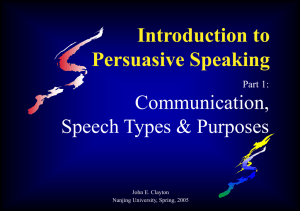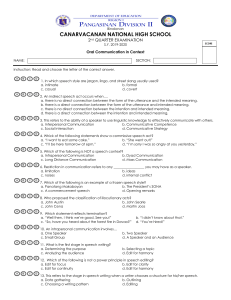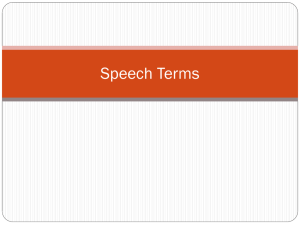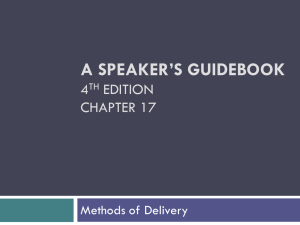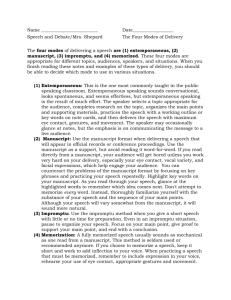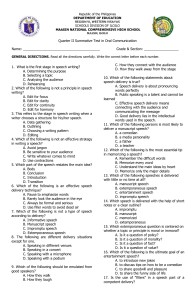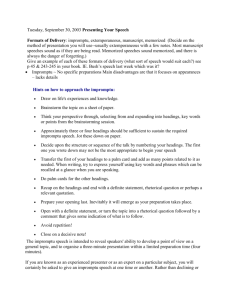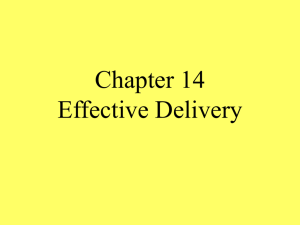UNIT 1 ESSENTIALS OF SPEECH DESIGN Types of speech
advertisement
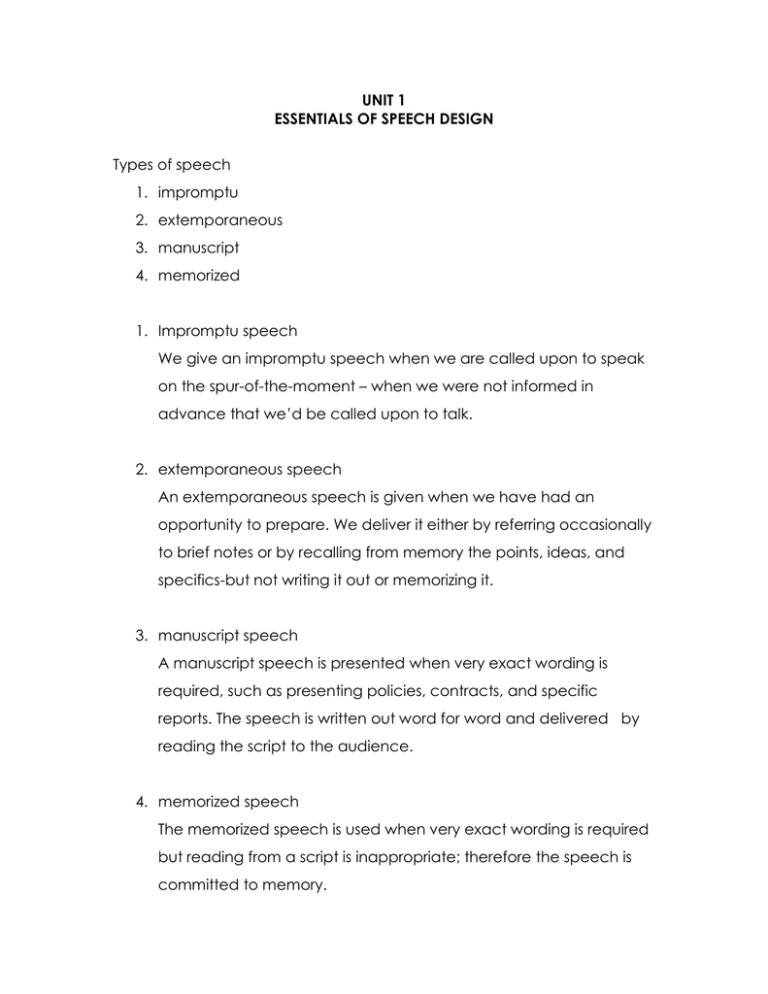
UNIT 1 ESSENTIALS OF SPEECH DESIGN Types of speech 1. impromptu 2. extemporaneous 3. manuscript 4. memorized 1. Impromptu speech We give an impromptu speech when we are called upon to speak on the spur-of-the-moment – when we were not informed in advance that we’d be called upon to talk. 2. extemporaneous speech An extemporaneous speech is given when we have had an opportunity to prepare. We deliver it either by referring occasionally to brief notes or by recalling from memory the points, ideas, and specifics-but not writing it out or memorizing it. 3. manuscript speech A manuscript speech is presented when very exact wording is required, such as presenting policies, contracts, and specific reports. The speech is written out word for word and delivered by reading the script to the audience. 4. memorized speech The memorized speech is used when very exact wording is required but reading from a script is inappropriate; therefore the speech is committed to memory. Basic format for a speech I.INTRODUCTION A. Attention getter B. Preview II. DISCUSSION Main points Arrange logically Support with data III. CONCLUSION Review Memorable statement Speeches: 1. to inform 2. to persuade 3. to entertain UNIT 3 PREPARING TO SPEAK A. HOW TO PREPARE NOTES 1. study an example of a good note card 2. recognize the two purposes of a note card a. to help you as a speaker recall what you want to say b. to give you a greater sense of security 3. limit the number of your note cards 4. use a card rather than a slip of paper 5. use a standard 3 X 5 inch note card 6. write your material across the narrow dimension of the card 7. use an outline form 8. number your cards 9. write out the first sentence of the introduction and conclusion 10. be specific 11. note where you plan to use visual aids 12. use the final version of your notes to practice 13. carry your notes inconspicuously as you step up to speak 14. avoid referring to your notes for your very first words 15. statistics and quotations are sometimes more effectively delivered by being obvious in referring to your notes 16. be in a position to refer to your notes when you need them 17. don’t leave your notes on the lectern after you’re finished speaking 18. there is no lectern, keep the notes in your hand, not in your pocket 19. don’t refer to your notes if you don’t need to An Example of a Good Note Card 1. I. INTRODUCTION A. Hawaii’s gold is found on its beaches. B. How to find shells II. DISCUSSION A. Be on beach at sunrise 1. The need to be first 2. Story of women who camp there B. Make fast survey of large area (SHOW MAP) 1. Check water’s edge a. large shells roll in (SHOW CONE) b. kick up new sand 2. 2. Check high tide a. story of valuable shell found under flotsam (SHOW COWRY) b. use a walking stick C. Select promising area, concentrate 1. judging the beach 2. using screen (SHOW) a. in dry sand b. in damp sand c. in water III. CONCLUSION A. be early, be fast, then concentrate B. Rewards of shell collecting (SHOW DISPLAYS) B. HOW TO PRACTICE YOUR SPEECH 1. go over your speech 3 to 6 times 2. practice from your actual note card 3. work to remember ideas, not word 4. mentally go over your speech, rather than say it aloud 5. push yourself through the entire speech for each practice 6. practice gestures only if you’re sure it will help you 7. practice in front of the mirror only if you’re sure it will help you 8. tape-record perhaps two practices 9. listen objectively to your recordings 10. practice using your aid 11. time your speech 12. don’t write out your speech word for word 13. don’t memorize your speech UNIT 4 ANALYZING THE SPEAKING SITUATION 1. audience 2. occasion 3. speaker 1. audience experience and knowledge of subject attitude toward subject attitude toward speaker occupation economic status educational status cultural status sex age number 2. occasion purpose of the meeting location facilities time other events after your speech 3. speaker knowledge time to prepare interest in subject reputation

